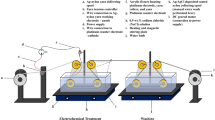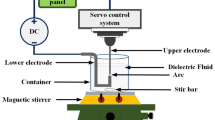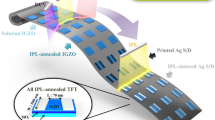Abstract
EXPOSURE of a silver–silver iodide electrode in an electrolyte solution to a flash of light causes transient changes in the electrode potential. This effect is a function of the concentration of potential-determining ions, I− and Ag+, and has a minimum near the point of zero charge (p.z.c.).
This is a preview of subscription content, access via your institution
Access options
Subscribe to this journal
We are sorry, but there is no personal subscription option available for your country.
Buy this article
- Purchase on SpringerLink
- Instant access to full article PDF
Prices may be subject to local taxes which are calculated during checkout
Similar content being viewed by others
References
Engel, D. J. C., Thesis, Univ. Utrecht, 16 (1968).
Bijsterbosch, B. H., Mededelingen Landbouwhogeschool Wageningen, 65–4, 26 (1965).
Author information
Authors and Affiliations
Rights and permissions
About this article
Cite this article
VAN PESKI, A., DE VOOYS, D. & ENGEL, D. Transient Changes in the Potential of the Ag-Agl Electrode induced by a Light Pulse. Nature 223, 177 (1969). https://doi.org/10.1038/223177a0
Received:
Issue date:
DOI: https://doi.org/10.1038/223177a0
This article is cited by
-
Recent advances in the chemistry and properties of atmospheric nucleants: a review
Pure and Applied Geophysics PAGEOPH (1971)



